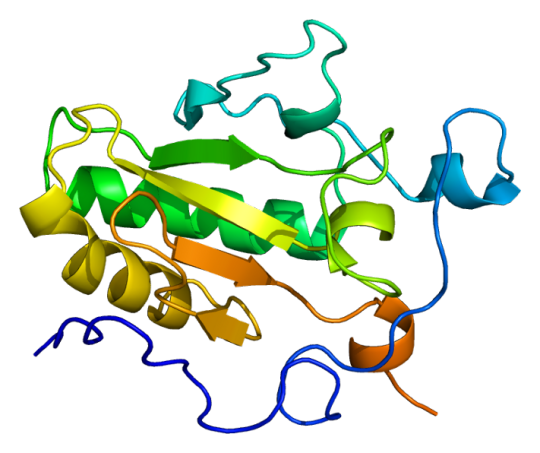#intermediate rapids
Explore tagged Tumblr posts
Text

Rafting River Routes
Explore the best rafting river routes in the Grand Canyon with the expert help of Advantage Grand Canyon!
#safe rafting trips#rafting experience level#rapids for kids#rapids for experts#advanced paddling skills#beginner rafting tips#rapids for beginners#intermediate rapids#advanced rapids#expert rafting challenges#whitewater rafting grand canyon#rapids safety tips#choose the right rapids#grand canyon river routes#rapids adventure guide#rapids navigation skills#rapids skill level#whitewater rafting guide#rapids classification#colorado river rapids#rapids difficulty scale#grand canyon rafting trips#rapids challenge levels#rafting adventure booking#rapids rafting tours#whitewater safety tips#rafting river routes#expert rafting trips#scenic rafting routes#rapids river guide
0 notes
Text
#Agni-4 Missile#Intermediate Range Ballistic Missile#Strategic Forces Command#DRDO Agni Series#India's Nuclear Command Authority#Rapid Fire
1 note
·
View note
Text
You don't need to worry about the ATSV fandom dying. As someone whose been in the Marvel fandom over ten years - I can assure you this is natural.
The ATSV Fandom Isn't Dead: A brief look into the science of fandoms.


[me standing beside Hobie beaming my thoughts of love and adoration into his head like I'm professor x]
A lot of people are afraid of the ATSV dying - and I don't blame them.
In the era of shows releasing all in one day, or movies coming to streaming almost immediately - it's not hard to say we're in an era were content is consumed at ridiculously rapid rates.
I mean, this time last year Wednesday was breaking records on Netflix. Where's the hype now?
I know you see it too, there's less posts everyday in the Hobie tag, less screenshot breakdowns, etc etc etc.
But I'm here to tell you - The ATSV fandom is doing just fine. Better than fine. All of this is meant to happen.
Let me put it into perspective.
ATSV released on June 2nd - it's November.
ATSV released a little over six months ago.
For reference: The Avengers (2012) was released on May 4th.
The Avengers DVD wasn't available for purchase until SEPTEMBER 25th - almost SIX months later.
The time that the Hobie fandom has formed and existed - is the same amount of time people had to wait just to see The Avengers again.
Large periods of time where tags only get three posts a day TOPS was nothing to fear. xReaders and fanfics held the fandom over until the next trailer, the next sneak peek or leak.
Prior to the release of streaming, only a little more than ten years ago - it was NATURAL for a fandom to wait six months before even seeing the movie for a second time.
And mind you - streaming didn't exist. If you wanted to see The Avengers again, you had to go out and BUY it. $26.99.
If you wanted to order it online - you'd have to get it shipped to you. Before Disney plus, we watched on BlueRay Discs.
And the fandom was fine and healthy.
If a fandom that doesn't even have a DVD release can keep up content for six months, I think we'll be fine.
But I'll admit - there's still the question:
If the ATSV fandom is 'doing fine' then where is everyone going? Why are the tags getting slower?
The answer is simple:
FANDOM BIOLOGY
I LOVE social sciences and the systems people create and how they work - even unintentionally.
And I have a theory - one about the natural evolution and regeneration of fandom. Hear me out -
When it comes to ATSV:
We are leaving the Analysation Phase, the phase in which content creation is centered around deciphering and breaking down the most recent installment in the fandom.
During this phase usually see art of newer characters, new ships, meta breakdowns, easter egg point-outs.
We were in that phase.
Once the Analysation Phase dies down, usually main content creators may remain. The intermediate or liminal period.
The intermediate is usually when you'll see more x-reader art pop-up, the levels of fanart evening out as artists return to their favorite characters - usually incorporating any new ones they gained from the last installment.
Shitposts usually also become popular around this time, as the shock and weight of the story wear off, and we're more able to joke about the storyline a lot more light-heartedly.
That's why the intermediate point is often see as the passion 'dying out'.
When in fact, it is the fandom getting comfortable. Resting for the next phase.
And after a few months, the next phase comes:
The Speculation Phase:
The Speculation Phase cannot come until the Analysation Phase is over.
During the Analysation Phase the fandom begins to breakdown and digest the writers intentions. They integrate the new character into the story, and the fandom.
As the audience and fandom talk amongst each other, we get more solid ideas of who the characters are, what their motivations might be, and most important of all-
What they might do.
In the Speculation Phase we turn from the last installment - and start looking towards the future.
Let's take Hobie for example.
Looking at the timeline of the Hobie fandom, we can see a progression.
Originally taken as a punk-rockstar and little more, throughout the months the fandom began posting things about punk culture, the 70's, Hobie's motivation in the comics, and how that all correlates to him.
As the fandom analyzed, the collective zeitgeist and understanding of Hobie grew into something a lot more sound, and telling.
We looked at the parellels he provides in the story, and what kind of person he is.
And because if that we have seen a marked improvement in people's contextual understanding of Hobie - as a punk and a hero.
And now that we can understand him - we can predict him.
The same goes for Miguel - over the months, a lot of us have began to question if we know him as well as we think we do , if we really know the kinda person he is -
And if we really know what he's doing to do.
That's where the Speculation Phase comes in.
The Speculation Phase in fandom is when we see some of the most passion - and instead of tapering off overtime, it builds. More and more until the next release.
The Speculation Phase is when the fandom takes the analysis' and from there, they begin to theorize.
Now that we understand, we can begin to predict.
And this is arguably one of the most interesting parts in a fandoms natural ecosystem.
During the Speculation Phase, we can see a number of diverse opinions appear.
As more and more creators begin to gather their understanding, tips from the writers, new released news, and past comic book arcs, we start to see dozens of triguing paths the writers can take us on.
As more news releases, the more hype people get. I mean - imagine how you'll feel when they release the first new poster of Hobie, or Miles? Or when we get to see Miles.G in the trailer?
And with each new poster, or trailer, we're given clues. The theorizes develop more. And the plot thickens.
It's all natural.
So I can understand the fear. Only getting one or two new posts when you visit the Hobie tag can be a bummer. But it's natural and it's GOOD.
Y'all, we need to conserve our energy. We are in the liminal phase. And they never last long.
With the news of the voice actors back in the studio, and a cliff-hanger like we have - I can assure you, it's only a matter of time before we begin to see the theories, the trailer breakdowns, the people guessing what Miguel might do, or exactly how much tech Hobie is hiding.
And when that time comes we need to be READY. I can already feel it on the horizon.
I really wonder what they'll do with all that left over Hobie concept art.
Plus with explosion of Hobie approval, I wonder if they'll add him in even more. Hobie fan-service anyone?
Hmmm...
But chill y'all, we're on the right track -

-------------------------------------
If you read this far, as always THANK YOU SO MUCH!! And as a token of my appreciation, I hand you this Hobie. Hold him gently please


Bye 💗
#no proofread ever ever EVER#spiderman#atsv#spider man#marvel#across the spiderverse#hobie brown#spider punk#spiderpunk#Miles morales#miguel o'hara#miguel ohara#peter parker
410 notes
·
View notes
Text
Human Cell Tournament Round 2
Propaganda!


Adipocytes, also known as lipocytes and fat cells, are the cells that primarily compose adipose tissue, specialized in storing energy as fat. Adipocytes are derived from mesenchymal stem cells which give rise to adipocytes through adipogenesis. In cell culture, adipocyte progenitors can also form osteoblasts, myocytes and other cell types. There are two types of adipose tissue, white adipose tissue (WAT) and brown adipose tissue (BAT), which are also known as white and brown fat, respectively, and comprise two types of fat cells.
The cytoskeleton is a complex, dynamic network of interlinking protein filaments present in the cytoplasm of all cells, including those of bacteria and archaea. In eukaryotes, it extends from the cell nucleus to the cell membrane and is composed of similar proteins in the various organisms. It is composed of three main components: microfilaments, intermediate filaments, and microtubules, and these are all capable of rapid growth or disassembly depending on the cell's requirements.
#Adipocytes#Cytoskeletons#poll#polls#tumblr poll#tumblr polls#vote#tournament poll#wikipedia#cells of the human body#science tournament#biochemistry
17 notes
·
View notes
Text
Mika Tee is all knit, ends woven in, and blocked!


Pattern: Mika Tee, size 3 // Yarn: Malabrigo Mola in Pocion // Needles: 2.25mm // GerTw c /o and JSS b/o // Difficulty: 2.5/5; need to know german short rows, picking up stitches, dropping stitches, and basic knit/purl stitching. Intermediate knitter would be comfortable making this.
The colorway has grown on me! I still may over-dye it black in the future. The finished piece came out a bit looser than intended, but I think it still fits well. Since this is a silk yarn, there isn't much stretch to it, so that may be for the best.
Modifications made to pattern:
Not many this time! I did more rapid increases for waist shaping, and that's about it. I realized about 20 rows into the body that the waist wasn't decreasing enough, so started doing a decrease every other row to decrease more rapidly. The way my body is shaped means that I have about a single size difference between my shoulders/bust and my waist, so this is par for the course for garment shaping for me. I also knit the sleeves a bit shorter.
90 notes
·
View notes
Text
Find Five Lines
Thanks @pluttskutt here!
Rules: post a line following each prompt, then change ONE PROMPT for the next folks!
A line about traveling
From The Secret Portal Part Two (Jedi POV)
Yesterday completed our journey across Sector 3 to al-Gharb. Dara kept up his end of the deal all the way, and even accepted a little less money from Eomma than the initial deal. The journey was long and monotonous, but it gave me time to read up on what our next stop was going to be. There was a large mountain range at the border of Sectors 3 and 4, and in order to cross it into the rest of the Sector without a transport, we would need to take a train.
A line about silence
From The Secret Portal Part Two (Lexi POV)
We usually talked for the whole thirty minutes about various things: class, Gwen’s relationship with Akash, or whatever had happened during the weekend in Alium. But today, several minutes in, we hadn’t really said a word to each other. I didn’t have to be a telepath to figure out why. Beside me, Ash had her eyes glued to her food. The silence was driving me insane. My knee bounced in anticipation. “So how’s band going?” I blurted out. “It’s fine,” Ash said.
A line about rage
From The Secret Portal Part Two (Robbie POV)
I turned on my back and glared up at the ceiling as if the ceiling was cancer itself. Part of me wished that there was something or someone to blame more than a disease—then maybe I could direct the anger I felt at an entity. How could anything take someone away like that? Leave them suffering for years, if not decades, and even in the peaks of hope, a disaster always follows. They do well for a while, then they relapse, and then they’re back in the hospital on the brink of death again.
A line about patience
From The Secret Portal Part Two (Gwen POV)
Lexi was tapping her nails on the table in rapid succession. We were currently all on Sublevel Four, which was a center for computers and offices, apparently. One of the rooms contained a long table for meetings, which is where we now sat. “I don’t understand why we need to wait until exactly five,” Maddie complained, shifting in her seat. “We’re all here.” “It’s the schedule,” Lexi answered, though by her tapping and staring at the clock on the wall, I could tell she was anxious.
A line about memory
From The Secret Portal Part Two (Lexi POV)
“Good evening,” I started. “My name is Lexi Morgan, and I am running for president of the orchestra club. I remember the first time I wanted to play the violin. In fourth grade, the Falcon Intermediate Orchestra went to play at Finch Elementary for the spring showcase. For one song, ‘Pop Goes the Weasel,’ all but one player of each instrument came out into the audience to allow one child to play the note A on ‘Pop!’ I was one of the lucky ones chosen by a violinist. Despite only playing the one note a few times, I knew then I wanted to play the violin. And here I am now, two and a half years later, as the concertmaster of the top orchestra class. [...]”
Tagging @laureleavess @museandquill @mk-writes-stuff @dyrewrites @eccaiia
+ ANYONE ELSE
Y'all's prompts: A line about traveling A line about silence A line about rage A line about fear A line about memory
TSP intro
TSP tag list (ask to be +/-): @thepeculiarbird @illarian-rambling @televisionjester @finchwrites
@nebula--nix @literarynecromancy @honeybewrites @the-golden-comet
#the secret portal#tsp excerpt#tsp#teaspoon#my writing#wip excerpt#writing community#find five lines#writers on tumblr#writers of tumblr#writing on tumblr#writeblr#writeblr community#writing tag game
9 notes
·
View notes
Text
Interesting Papers for Week 47, 2024
The neural basis of swap errors in working memory. Alleman, M., Panichello, M., Buschman, T. J., & Johnston, W. J. (2024). Proceedings of the National Academy of Sciences, 121(33), e2401032121.
Brain region–specific action of ketamine as a rapid antidepressant. Chen, M., Ma, S., Liu, H., Dong, Y., Tang, J., Ni, Z., … Hu, H. (2024). Science, 385(6709).
Predictive sequence learning in the hippocampal formation. Chen, Y., Zhang, H., Cameron, M., & Sejnowski, T. (2024). Neuron, 112(15), 2645-2658.e4.
A neural circuit architecture for rapid learning in goal-directed navigation. Dan, C., Hulse, B. K., Kappagantula, R., Jayaraman, V., & Hermundstad, A. M. (2024). Neuron, 112(15), 2581-2599.e23.
The Consolidation of Newly Learned Movements Depends upon the Somatosensory Cortex in Humans. Ebrahimi, S., van der Voort, B., & Ostry, D. J. (2024). Journal of Neuroscience, 44(32), e0629242024.
The effect of noninstrumental information on reward learning. Embrey, J. R., Li, A. X., Liew, S. X., & Newell, B. R. (2024). Memory & Cognition, 52(5), 1210–1227.
Closed-loop microstimulations of the orbitofrontal cortex during real-life gaze interaction enhance dynamic social attention. Fan, S., Dal Monte, O., Nair, A. R., Fagan, N. A., & Chang, S. W. C. (2024). Neuron, 112(15), 2631-2644.e6.
Attentional selection and communication through coherence: Scope and limitations. Greenwood, P. E., & Ward, L. M. (2024). PLOS Computational Biology, 20(8), e1011431.
Complexity of mental geometry for 3D pose perception. Guo, C., Maruya, A., & Zaidi, Q. (2024). Vision Research, 222, 108438.
Dynamic assemblies of parvalbumin interneurons in brain oscillations. Huang, Y.-C., Chen, H.-C., Lin, Y.-T., Lin, S.-T., Zheng, Q., Abdelfattah, A. S., … Chen, T.-W. (2024). Neuron, 112(15), 2600-2613.e5.
Selective reactivation of value- and place-dependent information during sharp-wave ripples in the intermediate and dorsal hippocampus. Jin, S.-W., Ha, H.-S., & Lee, I. (2024). Science Advances, 10(32).
Cell-class-specific electric field entrainment of neural activity. Lee, S. Y., Kozalakis, K., Baftizadeh, F., Campagnola, L., Jarsky, T., Koch, C., & Anastassiou, C. A. (2024). Neuron, 112(15), 2614-2630.e5.
The critical dynamics of hippocampal seizures. Lepeu, G., van Maren, E., Slabeva, K., Friedrichs-Maeder, C., Fuchs, M., Z’Graggen, W. J., … Baud, M. O. (2024). Nature Communications, 15, 6945.
The cortical amygdala consolidates a socially transmitted long-term memory. Liu, Z., Sun, W., Ng, Y. H., Dong, H., Quake, S. R., & Südhof, T. C. (2024). Nature, 632(8024), 366–374.
Signatures of Bayesian inference emerge from energy-efficient synapses. Malkin, J., O’Donnell, C., Houghton, C. J., & Aitchison, L. (2024). eLife, 12, e92595.3.
Neurodynamical Computing at the Information Boundaries of Intelligent Systems. Monaco, J. D., & Hwang, G. M. (2024). Cognitive Computation, 16(5), 1–13.
A general model unifying the adaptive, transient and sustained properties of ON and OFF auditory neural responses. Rançon, U., Masquelier, T., & Cottereau, B. R. (2024). PLOS Computational Biology, 20(8), e1012288.
The right posterior parietal cortex mediates spatial reorienting of attentional choice bias. Sengupta, A., Banerjee, S., Ganesh, S., Grover, S., & Sridharan, D. (2024). Nature Communications, 15, 6938.
Upper bounds for integrated information. Zaeemzadeh, A., & Tononi, G. (2024). PLOS Computational Biology, 20(8), e1012323.
Integration of history information Drives Serial Dependence and Stabilizes Working Memory Representations. Zhang, Z., & Lewis-Peacock, J. A. (2024). Journal of Neuroscience, 44(32), e2399232024.
#neuroscience#science#research#brain science#scientific publications#cognitive science#neurobiology#cognition#psychophysics#neurons#neural computation#neural networks#computational neuroscience
7 notes
·
View notes
Text
List of books I'd like to make book articles about:
Japanese in Thirty Hours (romaji only, but exceptionally useful little book to get a succinct and understandable basic grammar summary)
Le Francais Par Le Methode Nature (a Nature Method textbook, teaches 3000 common words entirely in the target language French using images and French explanations only. It is an interesting glance in how some language textbooks once taught. I wish nature method textbooks were still being made, this textbook helped my French significantly. I think Lingua Latina is one of the only nature method textbooks still used often nowadays)
All Spanish Method (a Direct Method textbook, note the similarities and differences compared to the Nature Methof textbook style. Particularly that Direct Method books contain some explanations in another language, and may require a teacher to understand some of the target language material. An interesting look into this older style of textbook)
Madrigal's Magical Guide to Spanish (wonderful summary of a lot of cognates and grammar patterns, I liked all the Madrigal books, I also used the French one)
German through Pictures (german taught through pictures as the only explanations, I wish more books like this existed)
Chinese Grammar Self-Taught by John Darroch (love the explanations in this, also the glance into how Chinese was taught in the 1920s)
Beginning Chinese Reader by DeFrancis (and Intermediate, and Advanced, all amazing Graded Readers. I havent read these in a while, but I renember they taught 1500 hanzi and 10,000 words from those hanzi, with built in natural review of words learned by using words from prior lessons in later lessons, and thousands of pages of reading practice)
Russian Language in 25 Lessons by Artemiy Belyaev (amazing short grammar guide)
Barrow Japanese at a Glance (all Barrow at a Glance books include short grammar summaries which I find particularly nice to include in phrase books)
Learn to Read in Japanese, A Japanese Reader Volume 1, by Roger Lake and Noriko Ura (they also made the free and incredibly useful japaneseaudiolessons.com, I love all the books they've made)
Spanish for Beginners by Charles Duff (I love all the textbooks Duff has written, they include learning by reading passages in the language)
Basic Patterns of Chinese Grammar by Qin Xue Herzberg and Larry Herzberg (great short grammar guide, helpful for identifying mistakes you may be making)
Tuttle, Learning Chinese Characters: A revolutionary new way to learn and remember the 800 most basic Chinese characters by Alison Matthews and Laurence Matthews (hands down my FAVORITE book to learn characters, helped me more than any other hanzi or kanji book or resource I've used, this is the book I constantly recommend to beginners)
Chinese Characters: Learn and Remember 2,178 Characters and their Meaning by Alan Hoenig (a good follow up book to learn more hanzi with mnemonic stories, but I'm forever disappointed this book doesn't incilude pronunciations. I prefer this book over Heisig's Remember the Hanzi, if you have to use one of them)
Reading Japanese by Eleanor Harz Jorden and Hamako Ito Chaplin (as I love by reading, I found this book, which provides a lot of reading practice and is a nice companion to another basic textbook like Genki)
A Japanese Reader: Graded Lessons for Mastering The Written Language by Roy Andrew Miller (this book has practice ranging from beginner to "learning to read newspapers and literary texts." I got it because a reviewer mentioned that after working through this book, they found they could easily read the newspapers and many fiction novels. The claim made me curious)
Rapid Literacy in Chinese, The Most Common Chinese Radicals, Intensive Spoken Chinese, all by Zhang Pengpeng (meant to be used together, teaches 40 conversational lessons and 1000 commonly used words and grammatical notes, 100 chinese radicals and basic structure of chinese characters, 750 commonly used words and 1300 words formed from them into 25 sentences and 25 conversational dialogues and 4 narrative prose pieces. It all combines to a quite solid foundation. This is an example of a decent beginner textbook option for Chinese, versus another textbook I found once which only taught 100 words - which was pathetically little)
2 notes
·
View notes
Text
Criminals dressed in fake military uniforms opened fire on spectators at a cockfight in rural Ecuador, killing 12 unarmed people and wounding several others, police in the violence-plagued South American nation said Friday.
Security footage of Thursday night's attack showed a group of at least five men entering the arena and opening fire with automatic rifles on a crowd of dozens in the rural community of La Valencia in northwest Ecuador.
The attackers were dressed in replica military uniforms -- a common tactic of criminal gangs in the country, which averaged a killing every hour at the start of the year as cartels vie for control over cocaine routes that pass through Ecuador's ports.
The footage, circulated on social media, showed spectators flinging themselves to the ground and taking cover under their seats.
"We have 12 people deceased as a result of an armed attack by a criminal group," police colonel Renan Miller Rivera said in a statement Friday. He said several people were injured, without giving a number.
Police have detained four people, including a "target of intermediate value," national police chief Victor Hugo Zarate wrote on social media. Police said the four suspects were believed to be part of an organized criminal group called "Los R7."
After the attack, police found discarded "military-style uniforms" and two abandoned cars on a nearby highway, Miller Rivera added. One of the cars had been set on fire, the other had overturned.
Police released video on social media showing officers recovering evidence hidden under bags and tree branches. The video also showed weapons and cash retrieved as well as an image of four people in custody with their faces blurred.
In addition to the uniforms, police said they recovered eight rifles, four pistols, three shotguns, eight magazines, 11 cell phones, ballistic helmets and tactical gloves.
Ecuador is home to around 20 criminal gangs — with striking names like "Los Freddy Kruegers" and "The Peaky Blinders" — involved in trafficking, kidnapping and extortion. They have wreaked havoc in the country of 18 million squeezed between the world's biggest cocaine producers, Peru and Colombia.
In recent years, the nation has been plunged into violence by the rapid spread of transnational cartels that use its ports to ship drugs to the United States and Europe.
About 73 percent of the world's cocaine passes through Ecuador, according to an interior ministry report.
Large parts of the country are under a state of emergency recently renewed by President Daniel Noboa, who was re-elected to a second term in elections last Sunday.
Ecuador gangs targeted by the U.S.
On the campaign trail, Noboa suggested U.S. special forces should be deployed to Ecuador to tackle drug violence and floated legal reforms to allow U.S. bases to operate in the country.
At least two high-profile Ecuadorian gang leaders targeted by the U.S. have made headlines this year. Earlier this month, the fugitive leader of "Los Cheronos" that relied on hitmen, bribes and military weapons to do business was indicted in New York City on charges he imported thousands of pounds of cocaine into the United States. José Adolfo Macías Villamar — whose nickname is "Fito" — escaped from a prison in Ecuador last year and is not in U.S. custody.
In 2024, the U.S. Treasury imposed sanctions on "Los Choneros."
Earlier this year, a leader of one of Ecuador's biggest crime syndicates, "Los Lobos," was arrested at his home in the coastal city of Portoviejo. Carlos D, widely known by his alias "El Chino," was the second-in-command of "Los Lobos" and "considered a high-value target," the armed forces said in a statement.
The U.S. last year declared Los Lobos to be the largest drug trafficking organization in Ecuador.
2 notes
·
View notes
Text
Main Story Chapter 2 BTS Episode 1: Nirvana Rebirth (涅槃重生) | Light and Night 光與夜之戀
♡———♡

For Chen Che, designing had never been easy.
A shoemaking prodigy, a rising design star, the fastest-promoted intermediate designer...
Despite the numerous titles people bestowed upon him, he still found design challenging.
He was skilled at shoemaking simply because he had watched his mother craft shoes since childhood, learning through observation and immersion. His craftsmanship was exquisite only because he had been in the industry for so long that his every movement was instinctively precise, like a machine. His rapid promotion was solely due to his relentless effort, surpassing everyone else.
He never possessed the talent or inspiration that were essential for a designer.
If his own inspiration was like a flickering candle, then Sariel was an inexhaustible source of fire.
No one knew that Chen Che had been striving to emulate Sariel since his very first design draft.
So, when he heard that Sariel was joining Wan Zhen, he was both excited and apprehensive.
And the first thing Sariel did after joining the company was to oversee the Wan Zhen designer promotion assessment that Chen Che would be participating in.
-
Chen Che submitted a new design draft, intending to take a break before starting on his designs for the promotion assessment.
To his surprise, shortly after handing in the draft, he was summoned to Sariel's office.
Standing outside the door, Chen Che nervously wiped his sweaty palms on his clothes, then finally worked up the courage to push the door open.
The first thing he saw was Sariel's indifferent expression.
"Chen Che?"
"Y-yes..."
Sariel tapped the desk, where Chen Che's newly submitted drafts were spread out.
"If it weren't for your signature, I would have assumed this was submitted by an assistant designer."
Chen Che's face burned, and he froze in place.
"I heard you're participating in the promotion assessment? You won't pass."
Sariel's slender fingers picked up a few sketches and handed them to him.
"Put your current design work on hold. Since you're so fond of imitating others, organize these design drafts of mine."
-
Sariel's words hit Chen Che like a slap in the face.
It was the first time he had received such blunt criticism, and to be so easily seen through...
Those so-called works of his were nothing but clumsy imitations.
He was almost completely demoralized. The designs for his promotion assessment were cast aside, and he didn't even touch the drafts Sariel had given him.
Two days passed. Finally, realizing that further procrastination was pointless, he mustered up the courage to look through those design drafts.
Despite the harsh criticism he had received, just knowing that these designs were from Sariel filled Chen Che with admiration.
But after meticulously studying them for two hours, he once again fell into a pit of self-doubt.
Are these... the latest trends?
In his opinion, these designs were completely amateur.
Had he fallen behind the times, his sense of aesthetics outdated?
He spent the entire night researching, poring over countless materials, but only grew more confused.
-
The next day, Sariel received the summary report Chen Che had compiled.
As he read the concepts and explanations accompanying the sketches, he unconsciously slowed down, savoring each page.
"The use of fabrics could be bolder."
"The elements are a bit too cluttered."
"The style seems rather mediocre."
The young designer had written down his honest opinions below each sketch.
His tone was cautious and polite, hinting at his hesitation and apprehension.
But at least, in the end, he had expressed his true thoughts.
A smile tugged at Sariel's lips as he read.
In fact, these design drafts were all from designers who had recently failed their job applications at Wan Zhen.
To be able to inspire a promising designer, to encourage him to find his voice... it was putting those drafts to good use.
He suddenly felt a spark of anticipation for this seemingly timid designer.
-
Sariel opened his email. The latest message was from HR, announcing the newly promoted designers.
He had finalized the list a week ago with the team leaders.
He still remembered Chen Che's surprised yet delighted expression when he announced the results.
With that thought, he opened the email.
It began with the usual congratulatory platitudes, followed by photos of the promoted designers and a quote from each of them.
Sariel found Chen Che. He was still wearing those thick glasses, looking unsure of himself.
But the quote below his photo was a bit surprising.
"I always thought I wasn't talented, that it was what I lacked as a designer. But recently, I realized that most people aren't geniuses. Compared to others, all I lacked was courage."
Sariel paused and pulled out Chen Che's design submission for the promotion assessment from a stack of papers.
It was restrained and meticulous, reflecting the designer's own personality.
But this time, it also incorporated a more abstract approach, expressing bolder ideas and emotions than before.
A faint smile touched Sariel's lips.
Every designer was unique, and no one's success could be replicated.
And now, another young designer had finally taken his first step.
.
.
.
.
.
Episode 2
If you’d like to support my translations, feel free to leave me a tip here or buy me a coffee through the "Leave a Tip" button on my navigation bar!
3 notes
·
View notes
Text
In the space of a few days, we received donations from around the world totaling over $25M. And more is coming in every minute. We are currently reaching out to 125 organizations to let them know they will soon be receiving rapid response, general operating grants so they can continue to help (and in some cases scale up helping) those LA communities hardest hit by the fires.
The first tranche of grants will go out next week and will total:

4 notes
·
View notes
Text
Rapids Classification

How To Choose The Perfect Rapids For Your Skill Level
The International Scale of River Difficulty (ISRD) rates Class I through VI rapids. Class III rapids are suitable for intermediates with some experience in white water rafting.
To have a good time while whitewater rafting, you must choose rapids matching your skill level. This means understanding how rapid classes work and knowing what to expect at each level.
Advantage Grand Canyon are experts in this field. Our guide is here to help you navigate various classes of rapids and find a suitable adventure in the Grand Canyon.
Classes of Rapids: The International Scale of River Difficulty
For a rafter, each stretch of river represents varying levels of challenge depending on their skills and experience. However, knowing this system ensures they select waters proportionate to their ability and safety measures throughout the journey while making it enjoyable.
Class I Rapids (Beginner)
Beginners or those who have never experienced whitewater should start with class one rivers such as the Badger Creek Rapid in the Grand Canyon.
Due to their smoothness, these rapids are very gentle and can be manipulated by anyone, even without basic skills. Hence, they offer great opportunities to appreciate scenic beauty without encountering difficulties like capsizing.
Class II Rapids (Novice)
Class II rapids might require more maneuverability but are still mild enough for novices and families looking for easy thrills. With just simple rafting skills and wearing life jackets alone, one may quickly navigate through them since they only involve minor splashing, which makes one feel less crowded. Thus, they are ideal places for kids accompanied by families.
Temperatures can be controlled during early spring or summer when sea levels rise. House Rock Rapid is one of the top Class II rapids with small waves and minor obstacles, providing more excitement while still being accessible for less experienced rafters.
Class III Rapids (Intermediate)
Class III Rapids offer moderate waves requiring maneuvering through narrow passages during Dead River trips, where helmets must be worn due to some moderately steep drops and small waves that demand teamwork and quick thinking, leading to fun challenges.
The turbulent drops of the Dead River and the dynamic current in Kennebec’s Penobscot River, which can be described as the fast river flow of Class III rapids, still offer its riders quite a challenge. More physical strength and thrilling emotions can be achieved when you choose rafting trips in adventure sports where people are involved in rafts and pass through different rapid river turns.
If you want to have a lot of fun and be tired while rowing on Class III rapids, then this is what you need. Select the right difficulty level for yourself, take all necessary measures before starting your journey, and rest assured that it will be one excellent whitewater rafting experience.
Hance Rapid is another great intermediate rapid with chaotic waves and tight spaces. It provides a moderate test requiring adept maneuvering skills; intermediate paddlers looking for excitement should consider Granite Rapid.
Class IV Rapids (Advanced)
Class IV rapids are suitable for advanced and intermediate rafters. The river has high power but predictability regarding wave sizes, thus demanding more accurate boat handling techniques than any other category. Large yet unproven waves require narrow passes, so quick moves must be made by experienced guides who can recognize them easily. Otherwise, damages may occur since rescue becomes extremely difficult due to the conditions presented here.
For intermediate rafters, these advanced rapids are exciting because they push their abilities without being too dangerous like expert-level rapids would do; strong currents coupled with powerful waves occasionally dropping down call for confident spokesmanship as well precise steering ability from behind paddles that, even though not extreme compared with class five require good familiarity with white-water courses together fast reflexes if one wants negotiate safely through complex choppy sections which characterize these parts most liked by those having some knowledge about this sport but not enough experience.
Lava Falls and Hermit Rapid in the Grand Canyon provide perfect challenges for skilled kayakers who enjoy steep gradients combined with large waves and turbulence.
Class V Rapids (Expert)
Class V rapids are long, violent, known as challenging rapids, and have hard-to-maneuver features. They represent the ultimate challenge in whitewater rafting. Highly turbulent waters, large and irregular waves, powerful and unpredictable currents, and steep drops over rocks are just a few characteristics that make Class V rapids so dangerous.
To paddle through Class V rapids, one needs to be skilled at paddling, have quick reflexes, and be able to make decisions under pressure. Only those experienced enough should attempt paddling through them because they can easily get injured or their boat may capsize if they do not wear the right gear to protect against such risks.
This is why we at Advantage Grand Canyon recommend only trained experts to undertake this activity, as it requires more demanding fitness levels along longer routes than any other category does; however, most people prefer taking up courses where necessary skills like appropriate equipment knowledge as well rescue techniques would greatly help ensure safety while attempting various challenging parts found within higher sections meant for expert-level rafters.
Crystal Rapid is one of the most complex and dangerous rapids on the Colorado River in Grand Canyon National Park. It is a class five rapid, which means that you must have advanced paddling skills to navigate down this section successfully. Otherwise, things might turn out differently from what had been planned since several huge waves could quickly sweep away even an experienced rafter like yourself.
Class VI Rapids (Extreme)
Whitewater rapids are classified from class I to class VI. Class VI rapids are the most complex and dangerous rapids to be attempted in a raft. They are considered almost impossible to navigate because they are unpredictable and have many hazards.
These kinds of rapids have big and standing waves created by powerful currents and often steep drops – sometimes over rocks or other obstacles like undercurrents which may flip rafts or suck them underwater for long periods. Rafters need extensive experience before attempting this level; depending on the conditions, it may still be too risky.
In rapid classification, classifying one as class six means it is highly hazardous and usually does not run during normal circumstances, requiring extraordinary expertise, precise steering, and carefulness. Most experts agree that professionals who have mastered all aspects of river running safety skills should only attempt anything higher than Class V, including rescue techniques.
Choosing The Right Whitewater Rafting Adventure
Several considerations besides whitewater classification should be made before selecting a whitewater rafting adventure to ensure your safety and enjoyment throughout the rafting trip. First, evaluate your experience level; beginners should start on manageable sections with gentle currents where they can learn basic paddling strokes without much risk.
Class I and II rapids provide an environment suitable for families with young children or people who wish to relax while being introduced to this sport. Secondarily, if you are looking forward to more thrilling experiences, go for those rivers with moderate complexity levels, such as III, which require advanced skills like reading water correctly, among others.
If you’re an intermediate rafter interested in testing yourself against serious rapids, then Class IV should be right up your alley. Such rivers demand strong paddle work combined with fast reflexes since you will encounter turbulent stretches where navigation becomes tricky due to numerous obstacles like holes and rocks.
Honesty is vital when choosing the appropriate rafting trip for yourself or your group.
Grade IV represents a substantial step up from many different classes in terms of difficulty, so one should have adequate skills before attempting such sections. If you are unsure about your capability, go for less challenging whitewater that matches your abilities. Otherwise, there might arise a need for rescue operations, which could put others at risk, too.
Location and scenery are other critical factors in choosing the proper whitewater rafting adventure. For example, different rivers offer landscapes ranging from lush forests to scenic canyons or even rugged mountains; therefore, researching different destinations will help you find a place that satisfies the desire for natural beauty and the thrill-seeking spirit within.
Final Words
In conclusion, choosing the proper whitewater rafting adventure involves carefully assessing your skill level, desired location, river trip length, and needed guidance. Considering these factors and the rapid classification from above, you can select a rafting experience that matches your abilities and preferences, ensuring a thrilling and safe adventure on the water.
Contact Advantage Grand Canyon today to search for rafting trips from all the top 15 outfitters in one place and book your next Grand Canyon rafting trip!
youtube
#safe rafting trips#rafting experience level#rapids for kids#rapids for experts#advanced paddling skills#beginner rafting tips#rapids for beginners#intermediate rapids#advanced rapids#expert rafting challenges#whitewater rafting grand canyon#rapids safety tips#choose the right rapids#grand canyon river routes#rapids adventure guide#rapids navigation skills#rapids skill level#whitewater rafting guide#rapids classification#colorado river rapids#rapids difficulty scale#grand canyon rafting trips#rapids challenge levels#rafting adventure booking#rapids rafting tours#whitewater safety tips#rafting river routes#expert rafting trips#scenic rafting routes#rapids river guide
0 notes
Text
Greater Healing Potion
Difficulty:
Intermediate alchemy. Alchemy trainers teach this recipe later in their classes as students advance.
Ingredients:
One-part Liferoot, freshly chopped.
One-part Kingsblood berries.
One crystal vial, for bottling.
Makes one potion. Adjust for larger batches by multiplying in a 1:1 ratio.
Recipe:
The recipe for a Greater Healing Potion originates in the Swamp of Sorrows. To concoct a potent Greater Healing Potion, one must begin by procuring whole Liferoot and a handful of ripe Kingsblood berries. Liferoot, known for its remarkable ability to retain fluids and prevent dehydration, should be thoroughly cleansed of any residual soil or debris. The root's inherent saltiness and earthy flavor are indicative of its capacity to collect saline from the surrounding waters. Crush the Liferoot using a mortar and pestle, taking care to extract as much of its natural liquid as possible. The remaining plant matter should then be immersed in the extracted fluid to further enrich the serum's restorative properties.
Resist the temptation to bind these reagents with alcohol or oils, as the waters of the Liferoot alone suffice.
Next, add the vibrant Kingsblood berries. Gently muddle the berries, allowing their crimson essence to infuse the mixture. The potion should then be left to mature, harnessing the ambient heat of the swamp to promote the binding of its components. Should this elixir be prepared outside of the Swamp of Sorrows, leaving an cast-iron cauldron in direct sunlight for a whole summer's day will impart the same ambient heat needed before brewing.
Within a day's time, the Greater Healing Potion will be ready. It should exhibit a deep crimson hue, its rich color evocative of the potent restorative properties contained within. The aroma of the potion is a complex melange, with the sharp, saline scent of Liferoot intermingling with the honeyed sweetness of Kingsblood berries, hinting at the flavor profile to come. The true marvel of this concoction, however, lies in its astounding efficacy in mending grievous wounds. When administered, the potion works with an almost preternatural swiftness, knitting together torn flesh, mending fractured bones, and restoring the body to a state of wholeness. The rapidity and completeness of the healing process is a testament to the remarkable potency of the Greater Healing Potion, solidifying its status as an indispensable tool for adventurers, warriors, and healers alike.
#world of warcraft#alchemy#fanon#roleplay#wowrp#warcraft#moonguard rp#wyrmrestaccord rp#classic alchemy#potion#healing
2 notes
·
View notes
Text

Astronomers detect rare cosmic burst as black hole consumes star
An international scientific team, led by a researcher from the Institute of Space Studies of Catalonia (IEEC) and the Institute of Space Sciences (ICE-CSIC), has managed to detect an exceptionally fast and bright cosmic burst in a small galaxy located 500 million light years away. The discovery is reported in The Astrophysical Journal.
The burst, identified as CSS161010, reached its maximum brightness in just four days and dropped to half in just 2.5 days, which meant that both its discovery and the subsequent observations of its evolution became a scientific milestone and a challenge for the research team. The main author of this work is Dr. Claudia Gutiérrez, a researcher at the IEEC and ICE-CSIC.
The CSS161010 event was discovered by the Catalina Real-Time Transient Survey, with a previous detection reported by the All-Sky Automated Survey for SuperNovae. Its subsequent follow-up, which allowed its characterization, was carried out with Telescopes including the Gran Telescopio Canarias (GTC) and the Nordic Optical Telescope (NOT), both installed at the Roque de Los Muchachos Observatory, of the Instituto de Astrofísica de Canarias (IAC), located in the municipality of Garafía in La Palma.
These types of rapidly evolving cosmic phenomena have been very difficult to study due to their nature. However, modern techniques and more advanced instruments make it possible to study them thanks to the improved field of view and the ability to capture high-resolution images of the telescopes used.
To date, only a dozen cosmic explosions with these characteristics in terms of brightness and evolution have been detected, but their origin remains a complete mystery. However, the team of researchers led by Claudia Gutiérrez believes that, for the first time, the unique spectral properties of CSS161010 provide important clues about its physical origin and their analysis suggests that it is actually resulting from a small black hole swallowing a star.
This conclusion was reached as the team found broad hydrogen lines showing very high speed, up to 10% of the light speed, and an unprecedented evolution. Two months after the start of the outburst, the object's brightness had decreased 900 times compared to its maximum.
Surprisingly, the spectra captured by the Gran Telescopio Canarias at this time revealed that all the hydrogen line profiles were still blueshifted, which in astrophysics means they are moving toward us at extremely high speeds. This would indicate a strong gas outflow, something completely unforeseen for a supernova.
"Discovering and analyzing these cosmic explosions is particularly challenging due to their rapid evolution. However, the agile response of our scientific collaboration allowed us to obtain high-quality spectra. These data revealed unique properties never observed in any other object, allowing us to constrain the nature of this extraordinary event," explains postdoctoral researcher Claudia Gutiérrez.
"When we saw the spectra, we didn't know what to say," says Gutiérrez. "We had never found a hydrogen line profile so blueshifted; this shift would mean that the gas is moving towards us at extremely high speeds. This feature was both surprising and intriguing, prompting us to investigate possible connections with the galaxy where the event occurred," she adds.
Looking for intermediate mass black holes
The burst occurred in a tiny galaxy containing a mass of stars about 400 times less than our Milky Way's. Therefore, if the galaxy hosts a massive black hole, its mass must also be small, corresponding to an intermediate-mass black hole (100–100,000 solar masses).
"So far, these kinds of black holes have been extremely hard to identify, and astronomers are only aware of a very small number of confirmed cases," explains professor Seppo Mattila, from the University of Turku in Finland, one of the lead authors of the paper.
"Identifying and characterizing intermediate-mass black holes is essential for understanding black hole formation pathways and evolution. In fact, they are the fundamental building blocks of supermassive black holes found at the center of galaxies, such as our Milky Way, and observed to exist even in the early universe," adds Professor Mattila.
Professor Peter Lundqvist from Stockholm University, also part of this team, adds, "The way the line emission evolves in this object resembles the one observed in active galactic nuclei, where supermassive black holes are known to exist. This similarity provides strong evidence that CSS161010 also hosts a black hole, although not a very massive one."
Lundqvist states, "The disruption of a star that comes too close to the intermediate-mass black hole reveals the black hole, which would be quiescent otherwise. There are likely to be other such black holes in other dwarf galaxies, and we need to track down events similar to CSS161010 in order to determine the properties of these black holes more precisely."
"Telescopes that scan the sky at high cadence will be crucial to discover more of these rare and rapidly evolving phenomena," says Dr. Gutiérrez. "In the meantime, state-of-the-art spectrographs on ground-based telescopes such as those we have used at the Roque de los Muchachos Observatory in La Palma will play a crucial role in characterizing them. We are at the cusp of an era of ground-breaking discoveries."
IMAGE: Top left: PS1 red, green, and blue false-color gri image of CSS 161010's field. Top right: false-color IMACS/Magellan V-band image of the field around CSS 161010. Bottom: relationship between BH mass (MBH) and stellar mass (M⋆) for a sample of galaxies. The estimated M⋆ of CSS 161010's host is indicated with a vertical black line, and the points where the fits cross it are highlighted with circles. Credit: The Astrophysical Journal (2024). DOI: 10.3847/1538-4357/ad89a5
3 notes
·
View notes
Text
Propaganda!


The cytoskeleton is a complex, dynamic network of interlinking protein filaments present in the cytoplasm of all cells, including those of bacteria and archaea. In eukaryotes, it extends from the cell nucleus to the cell membrane and is composed of similar proteins in the various organisms. It is composed of three main components: microfilaments, intermediate filaments, and microtubules, and these are all capable of rapid growth or disassembly depending on the cell's requirements.
The Indian hedgehog protein is one of three proteins in the mammalian hedgehog family, the others being desert hedgehog (DHH) and sonic hedgehog (SHH). It is involved in chondrocyte differentiation, proliferation and maturation especially during endochondral ossification. It regulates its effects by feedback control of parathyroid hormone-related peptide (PTHrP).
#Cytoskeletons#Indian hedgehog (Ihh) protein#tournament poll#polls#wikipedia#cells of the human body#science tournament#biochemistry
4 notes
·
View notes
Text
The US House of Representatives commissioned a Select Subcommittee on the “Coronavirus Pandemic” titled, “Lessons Learned and the Path Forward.” The "Final Report" was released on December 4, 2024.
The report reveals the catastrophic failures of lock downs, social distancing, masks, and government censorship, but the report fails to address the mass carnage imposed by mandated hospital protocols, Operation Warp Speed, and the failure of a "vaccine" that caused more suffering and death. The report, a 550-page compendium of evidence and references, not only highlights the needless suffering caused by these lockdown measures but also questions the very foundation of the pandemic response narrative. However, the report's findings fail to address the most egregious elephant in the room: the orchestrated bio-terror propaganda and the mass PCR testing fraud that led to a new era of biosecurity tyranny and planned depopulation.
Congressional Report unduly praises Operation Warp Speed, covering up the vaccine’s destruction to people’s lives globally
From the outset, the report’s claims of success in saving millions of lives through Operation Warp Speed are a gross misrepresentation of the facts. The rapid deployment of untested and inadequately evaluated "vaccines" was a dangerous experiment that disregarded scientific protocols. The assertion that these vaccines saved millions of lives is a politically charged claim with no rigorous trial data to back it up. In fact, Pfizer’s own intermediate results revealed more deaths in the vaccine arm than in the placebo arm, a critical detail conveniently omitted from the report.
The report also fails to address the mental and physical toll of long-term lock downs, which were never scientifically justified. Children and young adults were stripped of their normal childhood and developmental milestones, their mental and behavioral health issues exacerbated by prolonged isolation and unscientific restrictions. The impact on the mental health of the general population is staggering, with lock downs causing more harm than good in almost every aspect of American life.
The mandate for compulsory masking for children, a practice that scientific evidence now shows was harmful, is another glaring example of the government's disregard for children's welfare. The forced closure of schools for nearly two years was not supported by scientific evidence and will have long-lasting consequences on academic performance and mental health.
The elephant in the room that the report fails to address is the timing and origin of SARS-CoV-2. The report's focus on the likely lab origin of the virus is important but neglects the critical question of when the virus first emerged and from where. Evidence suggests that the virus was circulating as early as September 2019, challenging the narrative of a sudden, unprecedented outbreak. This timing issue is pivotal in understanding the scale and nature of the pandemic respons1`
2 notes
·
View notes